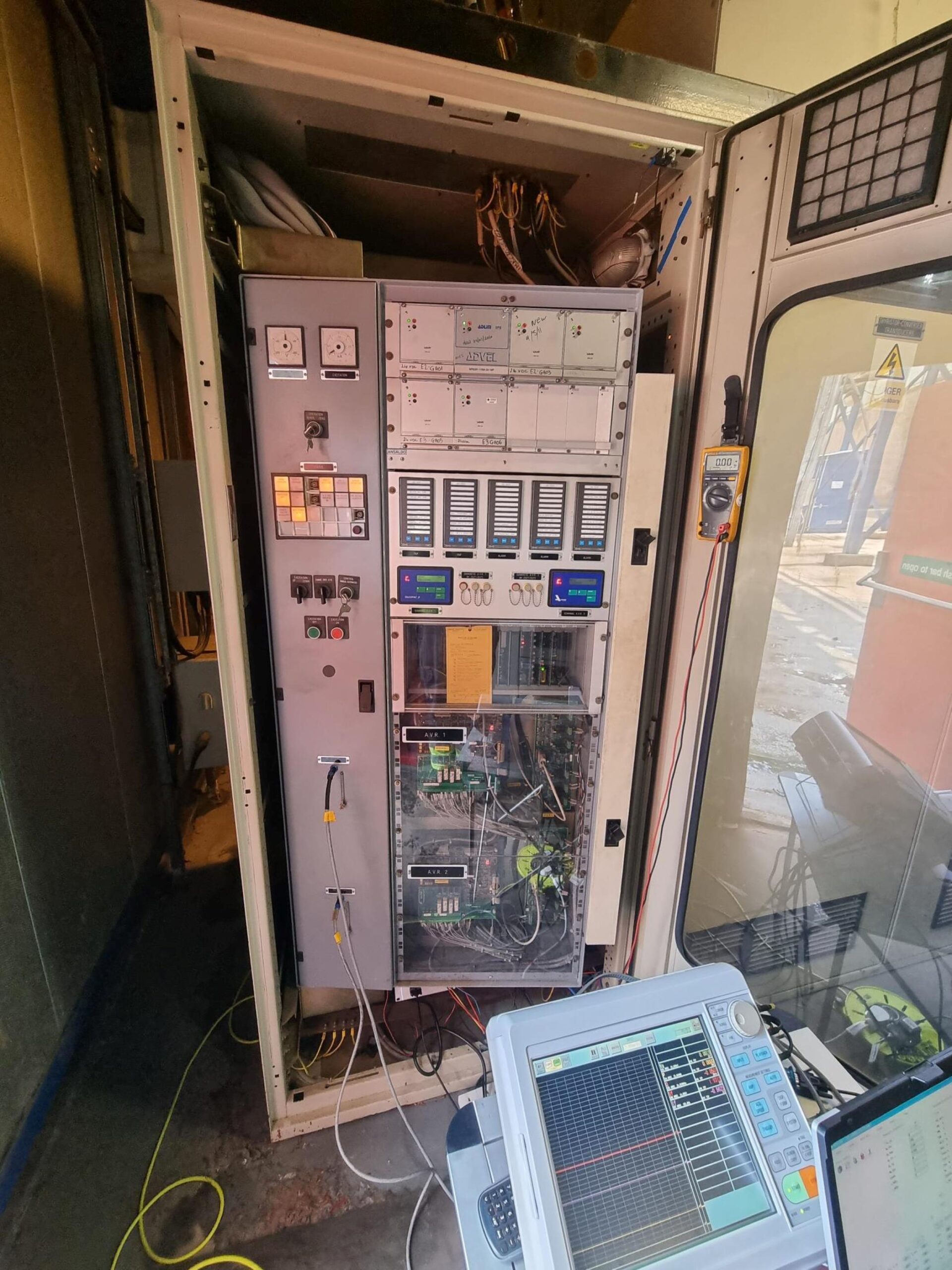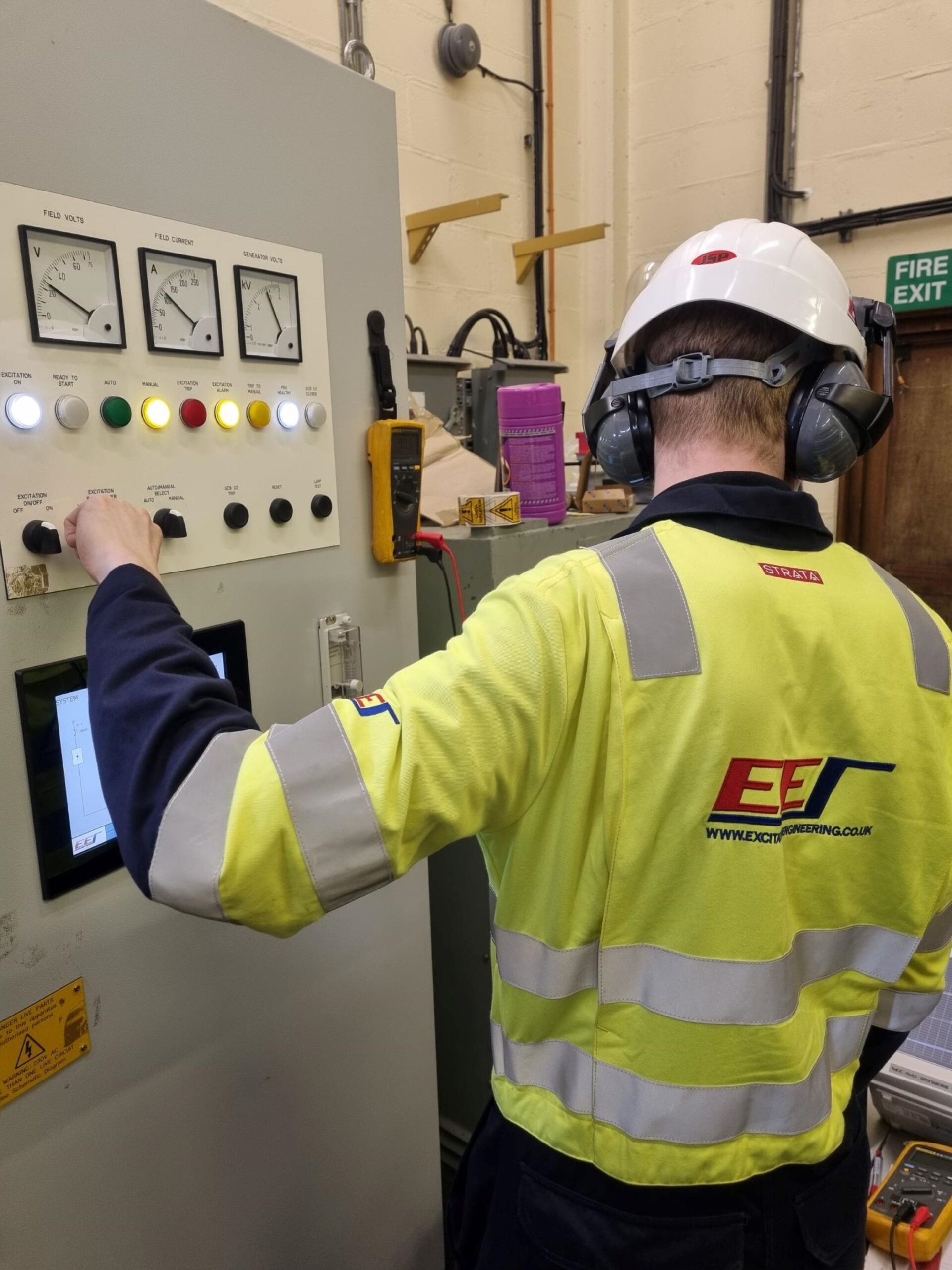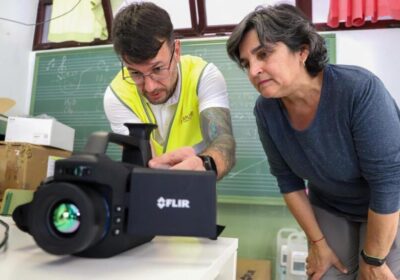~ The risks of integrated digital testing in excitation systems and how to overcome them ~
We all hate taking tests, so why not get someone else to do it? In academia, that’s called cheating, but in engineering — it is just good business. As integrated testing technologies evolve, concerns over their reliability grow. Here Ryan Kavanagh, director at excitation control specialist Excitation & Engineering Services (EES), explores why the latest integrated dynamic testing techniques may be causing concern, and why combining traditional methods with advanced modelling might be the most reliable approach.
Dynamic testing in excitation systems refers to the evaluation of the system’s response to fluctuating electrical loads, grid disturbances and fault conditions while operating under real-time scenarios.
The testing ensures the system can adjust its output appropriately to maintain stability and meet operational demands. Technicians check key components such as limiters and regulators to verify their functionality and effectiveness, preventing potential failures before they impact operations.
Traditionally, testing excitation systems has involved shutting down generators or motors, which can lead to extended downtime and significant costs.
Although digital testing devices have been integrated into many systems, they come with an inherent risk of bias. This could result in the system missing subtle operational anomalies or producing inaccurate results, leading to costly downtime or even equipment damage if not detected early.
Digital testing apparatus integrated into an excitation system may overlook certain issues. Since these devices are part of the system they test, there’s a risk of inherent bias, which raises concerns about their accuracy.
Essentially, the system is troubleshooting itself — a concept akin to a patient diagnosing themselves in a hospital. For reliable results, independent third-party testing is crucial to avoid missing critical faults and design flaws.
As an independent excitation engineering expert, EES instead combines traditional chart recorders, which monitor and record real-time data directly from the excitation system, with sophisticated modelling. This rigorous approach allows EES to present data in reports that are unequivocally correct, reflecting the true performance of the unit. The simulations replicate a wide range of operating conditions, allowing engineers to assess system performance under both normal and extreme scenarios.
By avoiding reliance on integrated testing systems, this hybrid approach ensures that external data from chart recorders are cross-verified with simulation models. This creates a more thorough and unbiased picture of the system’s performance, reducing the risk of hidden failures.

Testing without shutdown
This two-pronged method also allows for testing of the excitation system while the synchronous machine remains operational, minimising downtime and associated expenses.
Testing without shutdown enables EES to proactively identify potential issues. If intervention is deemed necessary, it can be scheduled during planned maintenance, significantly reducing overall shutdown durations. This approach minimises operational disruption and helps ensure that systems remain optimally functional.
One example of this involves an under-excitation limiter at a UK power plant, where EES’s dynamic testing revealed subtle oscillation instabilities that had previously gone unnoticed. Under-excitation limiters are crucial in excitation control. They prevent generators from operating beyond their capability, ensuring stable power generation.

The testing identified these oscillations which can cause power system instability. In some cases this can lead to equipment damage, grid destabilisation and cascading failures.
Looking ahead, the demand for efficient, real-time testing of excitation systems in both generator and motor applications will continue to rise, driven by the expansion of electrical infrastructure to meet increasing energy demands. For third party contractors like EES, this means testing methods must be continually refined to ensure speed, precision and adaptability in testing.
In short, while new integrated digital tools in dynamic testing can offer exciting possibilities, they also come with risks that could undermine performance and reliability. However, combining traditional methods like use of chart recorders with advanced modelling will bring reliable, undeniable results.

For a deeper look at how EES’s approach to dynamic testing can benefit your systems, visit www.excitationengineering.co.uk/test-equipment or talk to a member of the team at 01827 286100.







